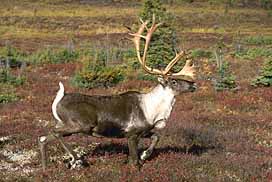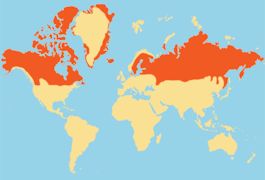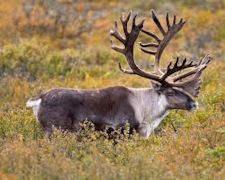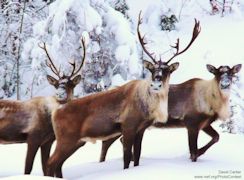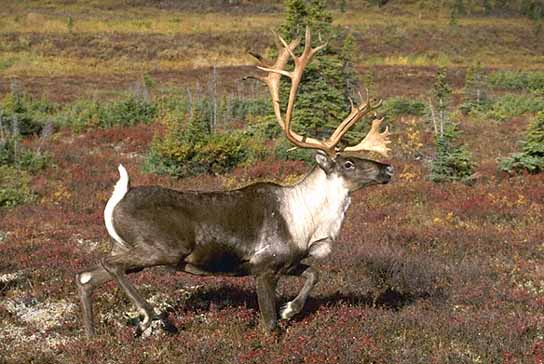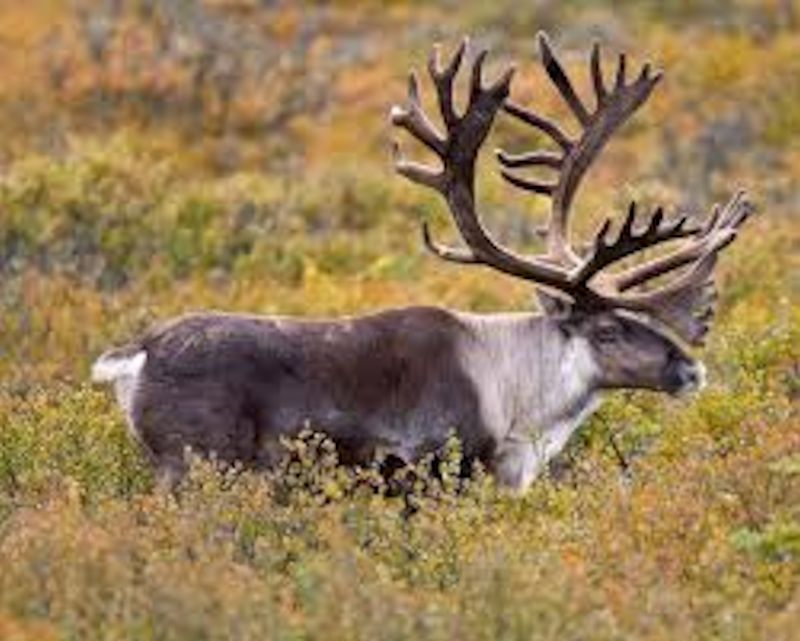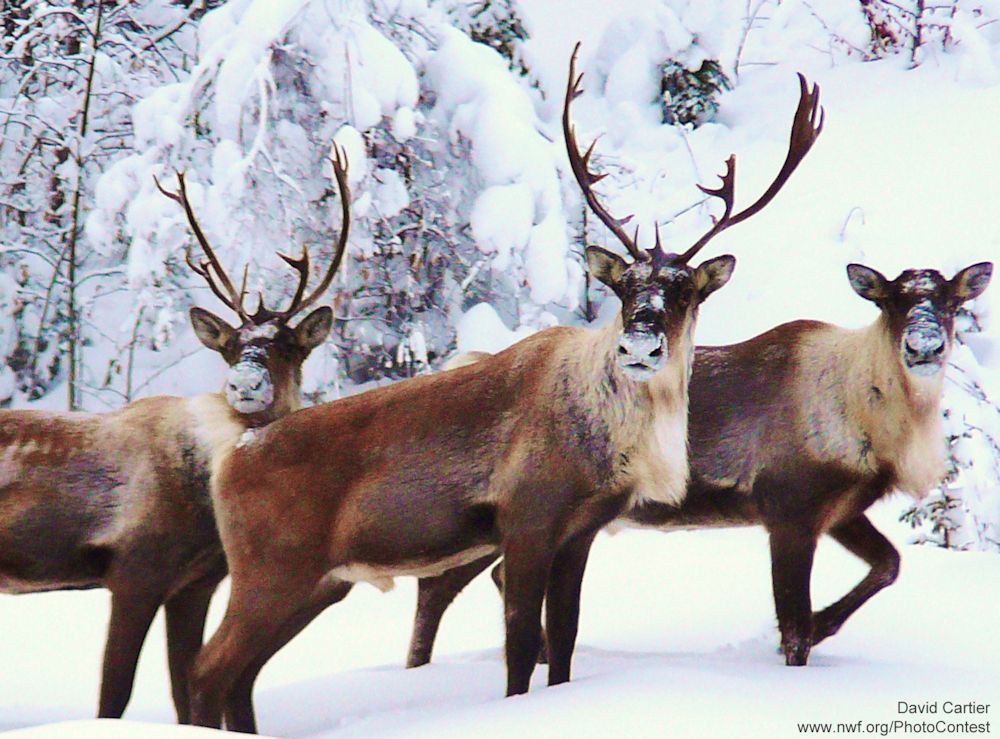Hoofed Mammals
Description
A medium-size cervid. Coloration variable; generally brown shaggy fur, with whitish neck and mane; belly, rump, and underside of tail white. On Arctic islands, animals are nearly white; tundra, taiga, and forest individuals are more brownish. Large snout; short, furry ears; short, well-furred tail. Foot pads large and soft in summer, shrunken in winter; hooves rounded. Male and most females have antlers; flattened brow tine projects vertically over snout. Bull antlers branched, semi-palmated, with flattened brow tines, 21–62” (52–158 cm) long; cow antlers relatively small and spindly, 9–20” (23–50 cm) long. Antler spread to 5’ (1.5 m). Fawn unspotted, resembles adult. Ht 27–55” (68–140 cm); L 4’6”–8’4” (1.37–2.54 m); T 4–8 1/2” (10.2–21.8 cm); HF 15–28” (38–70 cm); Wt male 275–660 lb (125–29” kg), female 150–300 lb (68–136 kg).
Similar Species
Elk lacks flattened brow tines and white throat; has large yellowish-brown rump patch. Deer are smaller, lack brow tines.
Breeding
Breeds October-November; after gestation of 7 1/2 -8 months, 1 or 2 calves born mid-May through early July; birth weight about 11 lb (5 kg).
Sign
Distinguishable mainly by tracks and locale;
deeply worn trails made during migrations; rubs on saplings,
thrashed bushes.
Bed: Depression similar to that of other
cervids.
Scat: Usually small, bell-shaped pellets similar to
White-tailed Deer’s; occasionally massed when animals are feeding on
succulent summer vegetation.
Tracks: Widely separated crescents,
5” (125 mm) wide, slightly shorter in length, almost always followed
by dewclaw marks; on thin, crusted snow, only round outlines of
hooves may print; hindprints usually overlap foreprints, leaving
double impressions 8” (200 mm) long.

